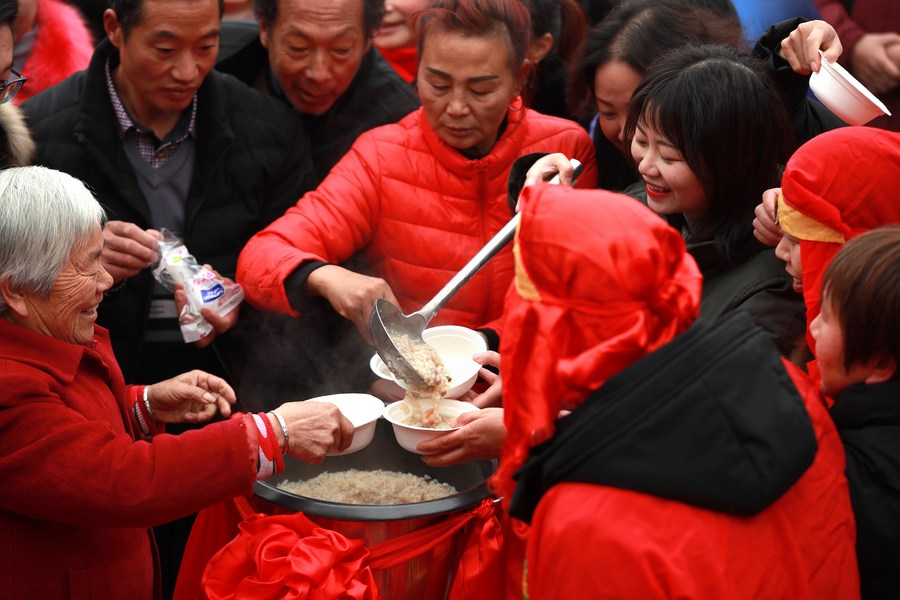
People gather for free Laba congee in Zigui County of Yichang, central China's Hubei Province on the Laba Festival in 2020. (Photo by Wang Gang/Xinhua)
BEIJING, Jan. 20 (Xinhua) -- The Laba Festival, celebrated on the eighth day of the 12th month of the lunar Chinese calendar, falls on Jan. 20 this year.
It is traditionally regarded as the prelude to Spring Festival, the most important festival for people of Chinese origin, reminding people to start their preparations for the coming festivities and for wanderers to return home and reunite with the family.
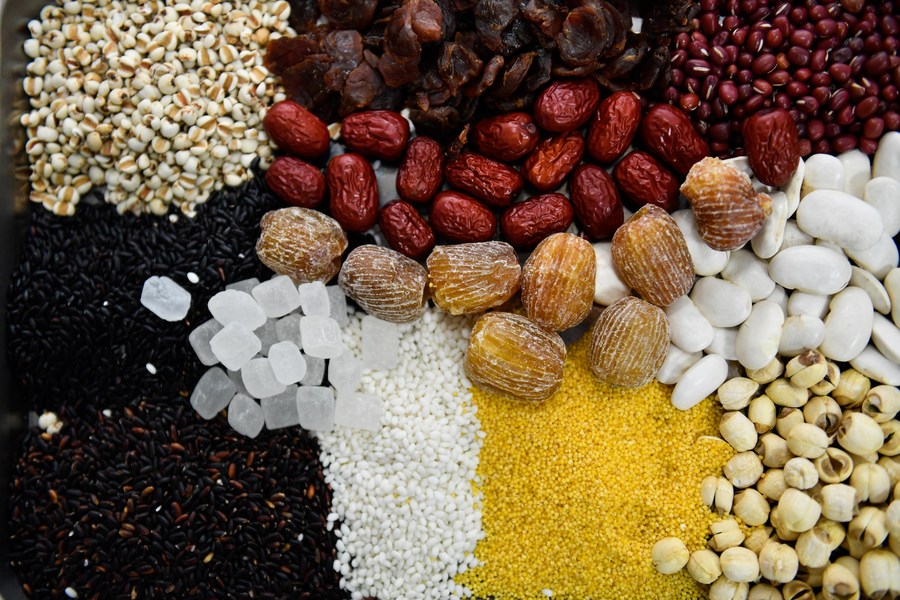
The ingredients for making Laba congee. (Xinhua/Huang Zongzhi)
The ancient Chinese custom was to sacrifice dried vegetables and meat to the god of agriculture, to pray for a good harvest on the next Laba festival.
The Laba congee generally contains at least eight ingredients, a fortunate number in Chinese culture. There's a wide variety: glutinous rice, red beans, millet, Chinese sorghum, peas, dried lotus seeds and some other materials like dried dates or chestnut meat.
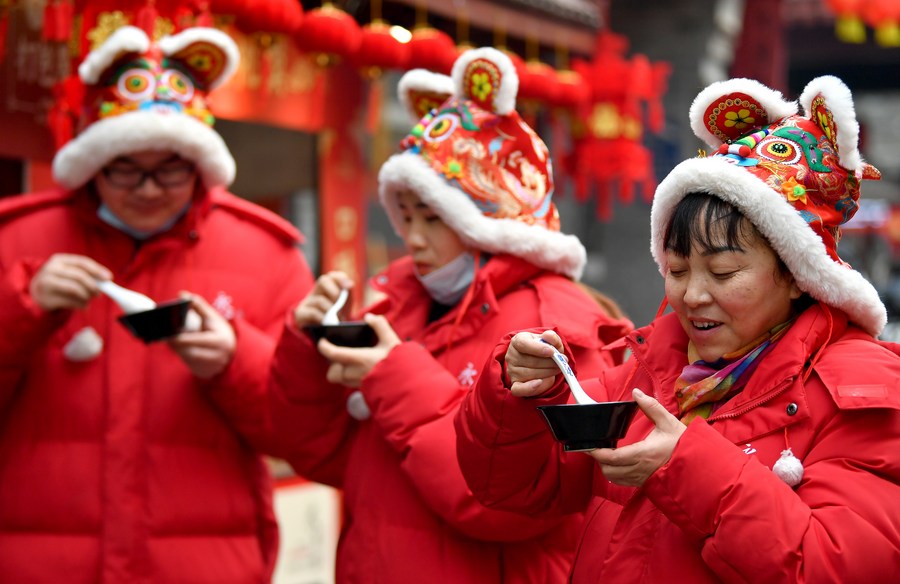
People eat Laba congee in Xi'an City, northwest China's Shaanxi Province, Jan. 20, 2021, on the Laba Festival. (Xinhua/Liu Xiao)
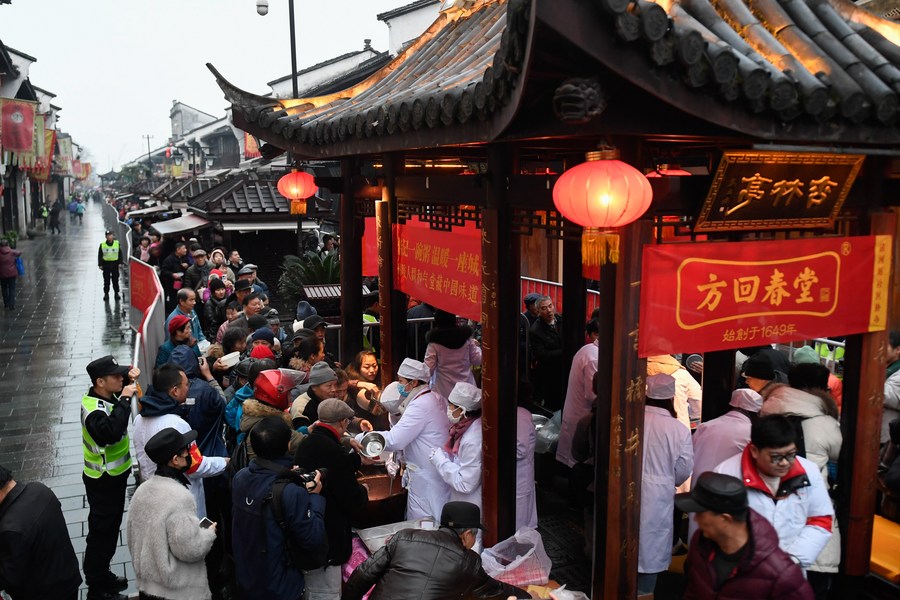
Citizens get free Laba congee at the Laba Festival in Hangzhou, east China's Zhejiang Province on the Laba Festival in 2020. (Xinhua/Huang Zongzhi)
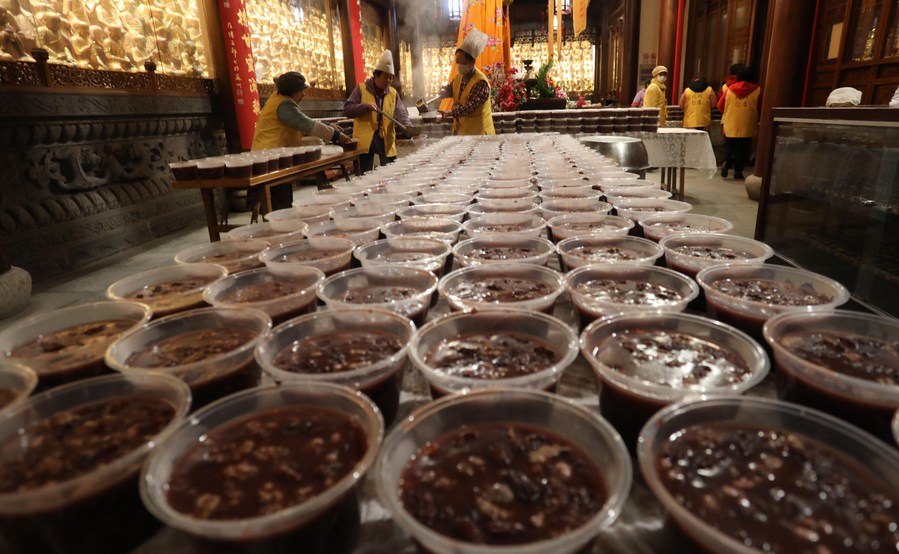
Volunteers prepare free Laba congee for local citizens at Hanshan Temple in Suzhou, east China's Jiangsu Province on the Laba Festival in 2020. (Photo by Hang Xingwei/Xinhua)
In the Buddhist tradition, eating and sharing congee commemorates the legend of Sakyamuni, saved by a girl who gave him a bowl of milk on the day he attained nirvana and became a sage. Many temples today have the tradition of giving out Laba congee to the public.
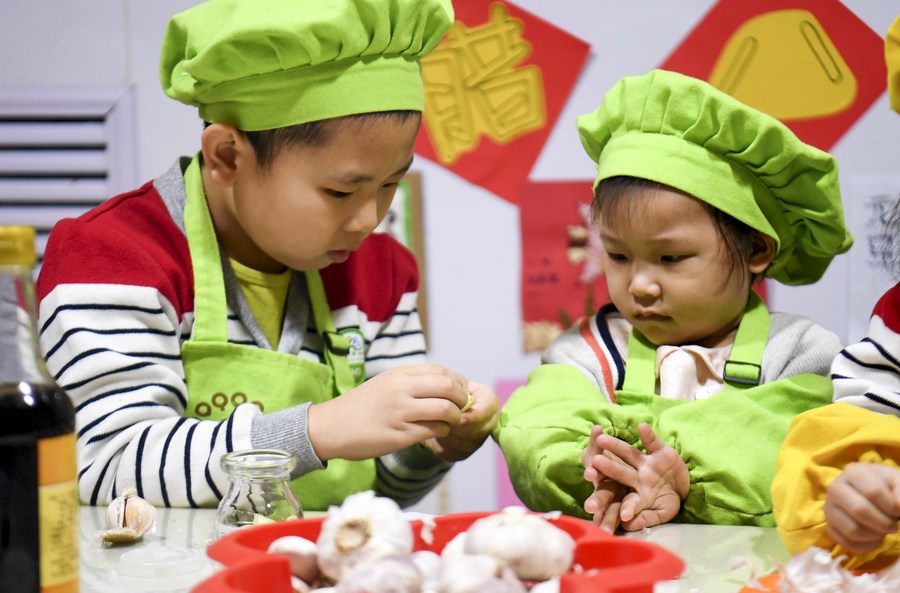
Children learn to make Laba garlic, a vinegar-preserved green and slightly spicy dish, at a kindergarten in Shijiazhuang, north China's Hebei Province on the Laba Festival in 2020. (Xinhua/Wang Xiao)
The festival is also the day for people to put garlic in vinegar, to pickle for more than 20 days before the Chinese New Year. The garlic turns emerald green, and this Laba garlic will be eaten with dumplings on Chinese New Year's Day.
Customs vary across the country. People in Qianxian County, east China's Anhui Province, will eat the Laba tofu basked several days before. In Xining City, northwest China's Qinghai Province, locals will eat wheat kernel rice boiled with beef and mutton.
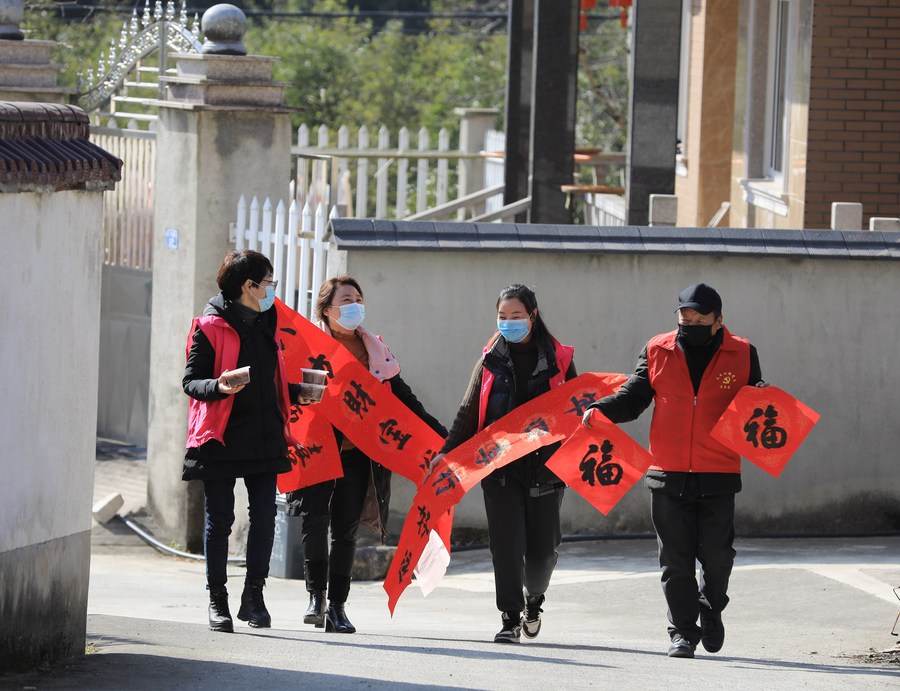 Volunteers go to present Laba congee and Spring Festival couplets to villagers at Wushan Village in east China's Zhejiang Province, Jan. 20, 2021, on the Laba Festival. (Photo by Hu Jianhuan/Xinhua)
Volunteers go to present Laba congee and Spring Festival couplets to villagers at Wushan Village in east China's Zhejiang Province, Jan. 20, 2021, on the Laba Festival. (Photo by Hu Jianhuan/Xinhua)
As an old Chinese saying goes, Spring Festival comes right after the Laba Festival, so get ready for a bowl of congee while expecting the long-awaited family reunion.
This year's Spring Festival falls on Feb. 12.




